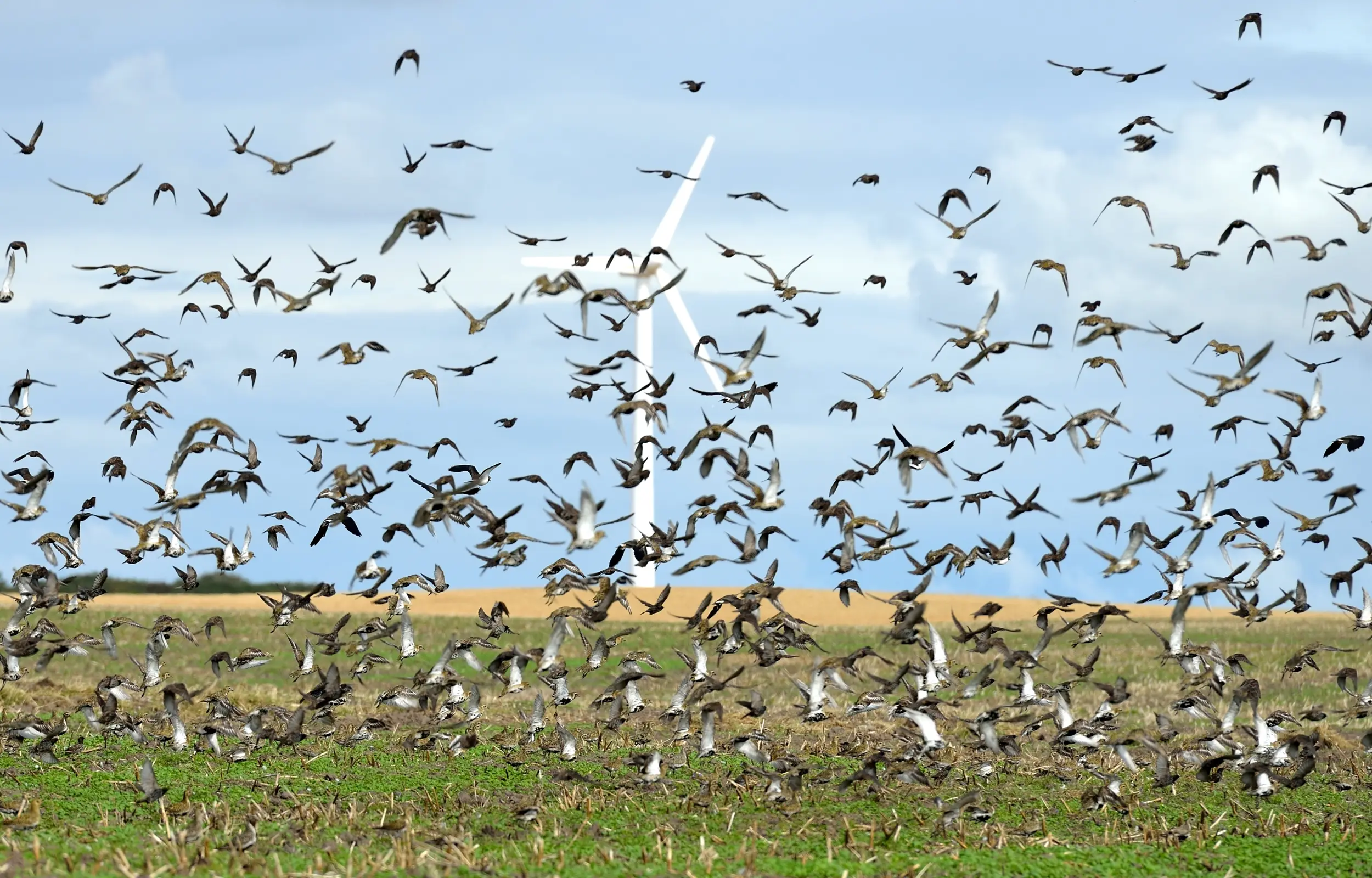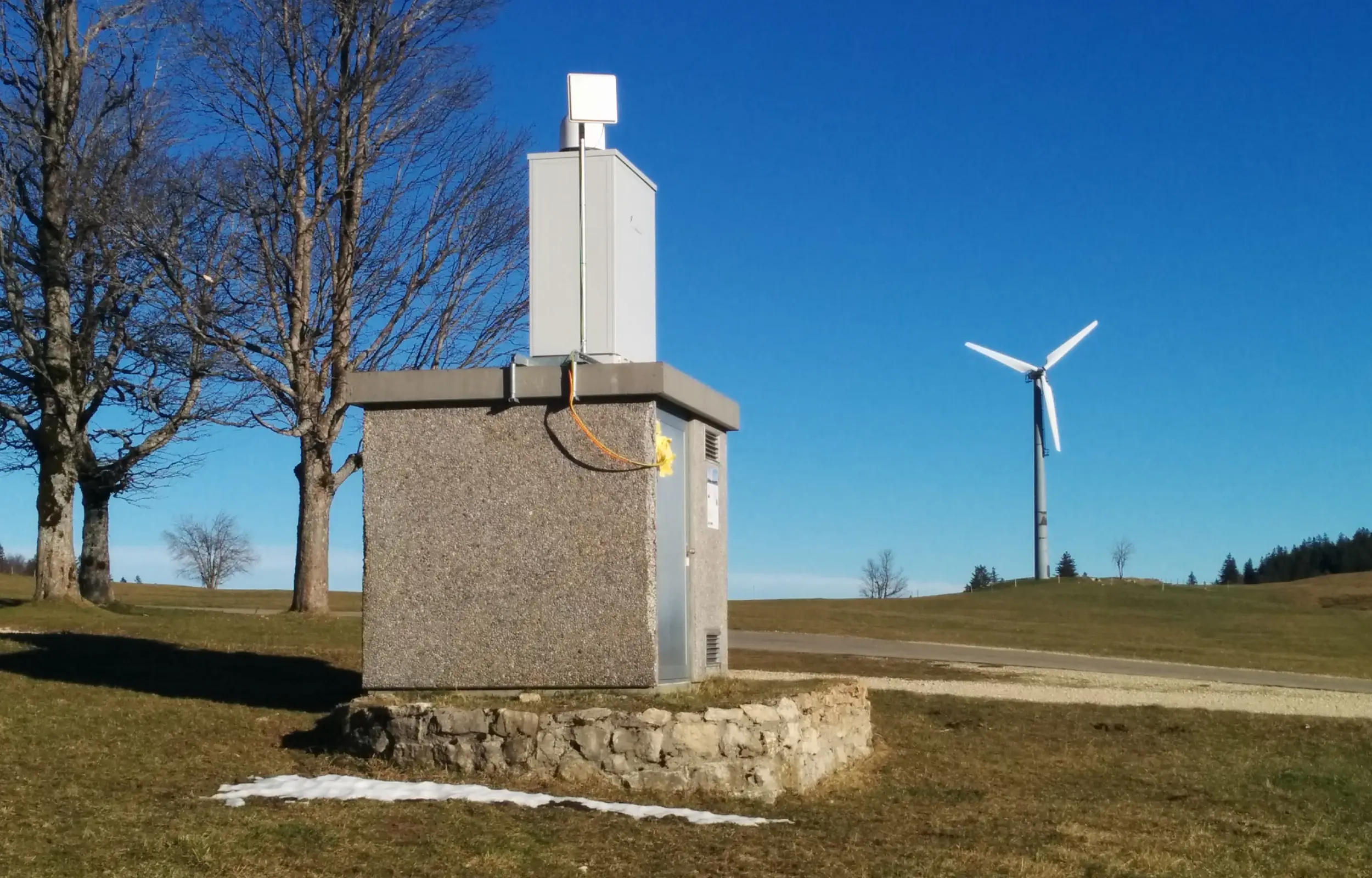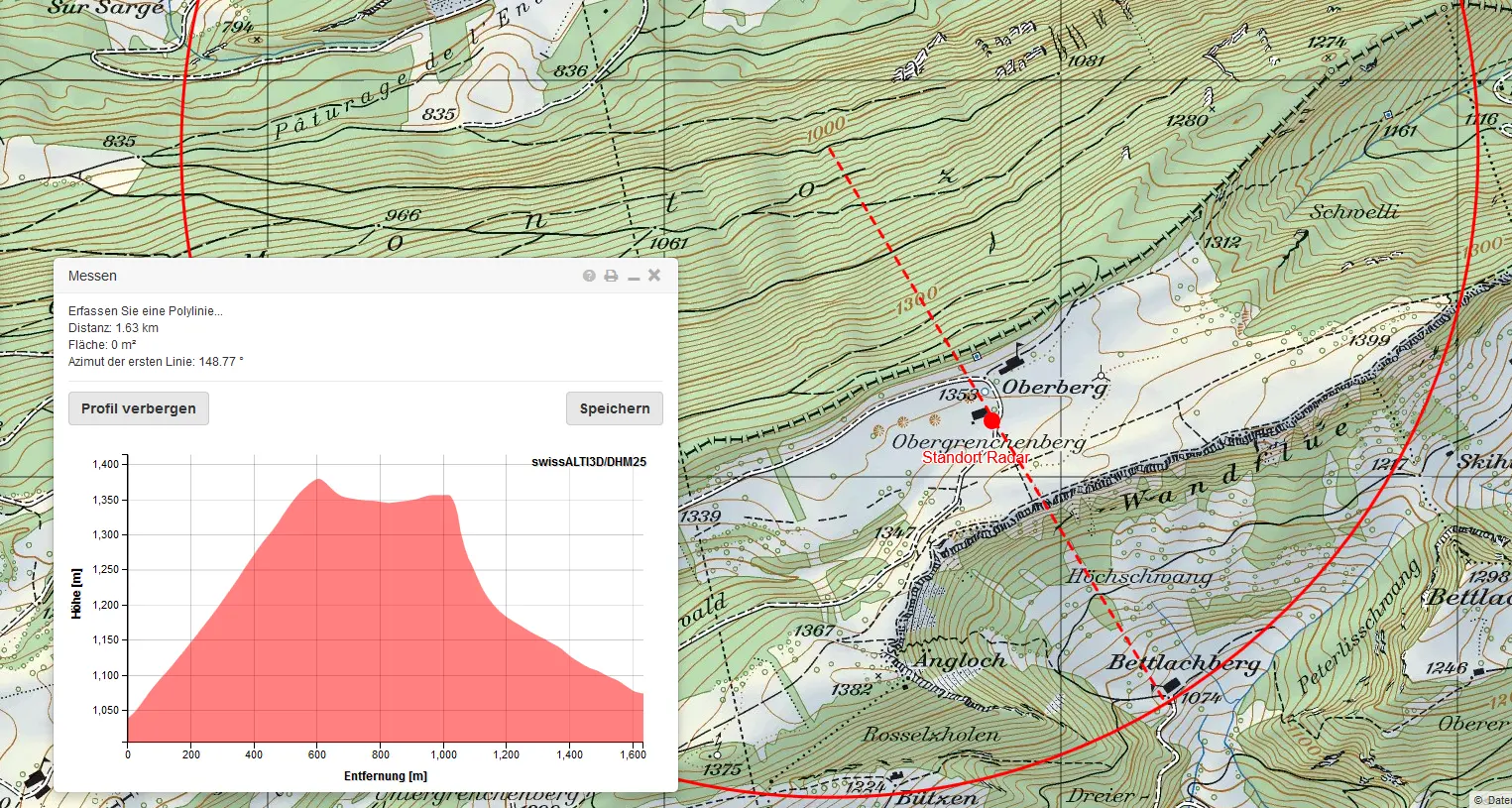BirdScan MV1 Radar for wind turbines
Bird Radar makes wind power friendlier to birds
Every year, millions of migratory birds fly over Switzerland. Some of them, unfortunately, end their journey in the rotors of a wind farm. Now, a new radar system which the ZHAW School of Engineering helped to develop should not only provide better protection to migratory birds, but also increase the efficiency of wind-power plants.
If the Swiss Confederation’s Energy Transformation 2050 agenda is implemented as planned, there will be a significant increase in the number of wind-power installations in the decades to come. Hundreds of additional wind turbines at heights of up to 150 metres will be a new source of danger to the nearly 200 million migratory birds flying over Switzerland each year. Studies carried out by the Swiss Ornithological Institute in Sempach show that some 20 percent of these birds fly at altitudes at which they could collide with wind turbines. Swiss Birdradar Solution AG has set itself the objective of ensuring that green wind energy can in future be produced in a way which jeopardises as few birds as possible. To that end, the company, in collaboration with its technology and science partners, has developed BirdScan, a new system based on radar technology and digital signal processing. The principal development partners are the Swiss Ornithological Institute in Sempach, the ZHAW School of Engineering and Brütsch Elektronik AG, their industry partner. The project has financial backing from Switzerland’s Innosuisse (former CTI).
“The objective is to be able to identify the current volume of migratory birds flying over Switzerland in broad formations during the day and, in particular, at night. When dense formations of birds are in flight, the wind turbines can then be temporarily shut down.”
Felix Liechti, Sempach Ornithological Institute
Identifying birds heading for danger
Housed in a compact container about two metres tall and one-and-a-half metres wide, the protection system should in future be set up at wind farm sites. As Felix Liechti of the Sempach Ornithological Institute explains, “The objective is to be able to identify the current volume of migratory birds flying over Switzerland in broad formations during the day and, in particular, at night. When dense formations of birds are in flight, the wind turbines can then be temporarily shut down.” The system uses a horn-shaped antenna which sends a vertical beam several 100 metres into the sky at an angle of about 45 degrees. “The radar sends out short, high-frequency pulses about 1,800 times per second. These then reflect off objects in the sky,” explains Daniel Früh of the Centre of Signal Processing and Communications Engineering, who is managing the ZHAW School of Engineering side of the project. When they reach the receiver on the ground, the reflected pulses undergo further digital processing. The task for Daniel Früh and his team was to develop an algorithm capable of distinguishing birds from other objects in the sky and determining as precisely as possible how many birds had been identified and at what height they were flying. In order to optimise the system’s bird-detection capabilities, it was also necessary to carry out more development work on the radar’s high-frequency characteristics. This work was also required in order to obtain a licence to operate this innovative type of radar, for which a new national norm was registered with the Swiss telecommunications authority.
Dense flocks of birds automatically switch turbines off
If there are too many birds flying at a given height, the system will automatically shut down the wind farm. Once the number of birds diminishes, the rotors are switched back on. “The key advantage of this system is that the shutdown and restarting of the wind farm are fully automatic,” explains Daniel Früh. Because bird movements are monitored in real time, the wind farm is only shut down when the number of birds flying over it reaches a given threshold. This means that BirdScan is worthwhile both for birds and wind farm operators, explains Urs Seiffert of Swiss Birdradar Solution AG, the firm which will distribute the finished product. “Until now, in order to provide sufficient protection to birds, wind farm operators have had to switch off their turbines for comparatively long windows of time based on rough estimates of when large numbers of migratory birds were expected to appear. Our system provides more precise data on when wind turbines should be automatically switched on and off. This reduces downtime by about two thirds.”
“The key advantage of this system is that the shutdown and restarting of the wind farm are fully automatic.”
Daniel Früh, Project Manager, Centre of Signal Processing and Communications Engineering (ZSN)
Field test and follow-up project
The project has not yet been fully completed, however. “We are still making some detailed improvements to the way the system detects birds,” says Daniel Früh. While the accuracy of the algorithm is still being optimised, one BirdScan installation has already been in operation for several months on the Grenchenberg mountain in the Swiss canton of Solothurn. A wind farm with six wind turbines will soon be erected on this site, destined to meet the electricity needs of two thirds of all households and businesses in the town of Grenchen.
The ZHAW School of Engineering will continue to work intensively on bird detection systems in the future. A follow-up project has been planned which will examine bird movements in even greater detail. This should make it possible to determine the speed at which birds are flying, their flight direction and their species.
Brochure Swiss Birdradar Solution
At a glance
Participating institutes and centres
Project partners:
Financing:Innosuisse (former CTI)
Project duration: 2013-2016


